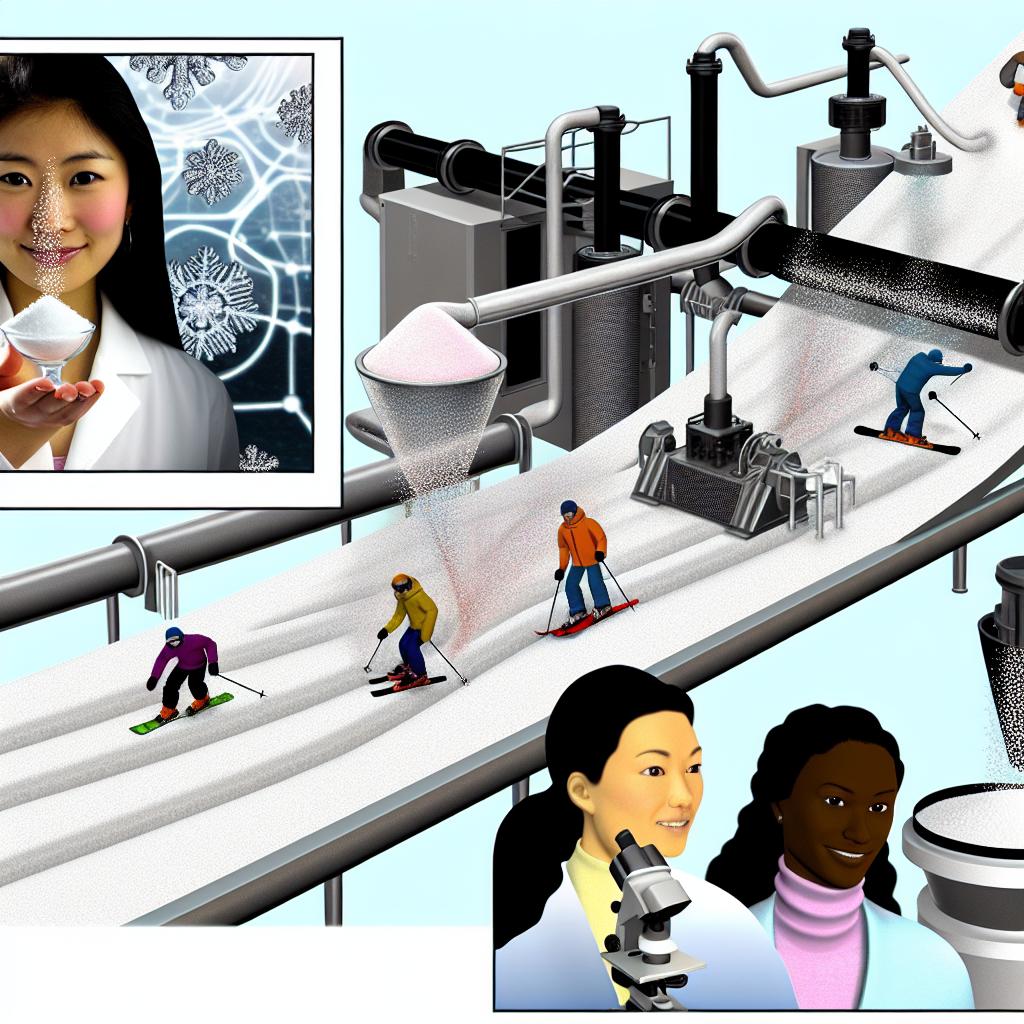Introduction to Snowmaking
Snowmaking is an indispensable facet of the modern winter sports industry. Given the unpredictability of natural snowfall due to climate change and seasonal variations, ski resorts have relied increasingly on this technology to ensure that they can maintain adequate snow coverage. This capability is crucial not only for extending the ski season but also for hosting sporting events when nature does not provide enough snow at the scheduled times. As such, an understanding of how snowmaking works can illuminate how winter sports have evolved and how they continue to adapt to environmental challenges.
How Snowmaking Works
At its core, snowmaking is a technology that mimics the natural process of snowfall. It does so by atomizing water into tiny droplets that freeze and fall as snow. The process revolves around three primary components: water, air, and energy. Each of these elements plays a pivotal role in the formation of artificial snow.
Snowmaking machines, often referred to as “snow guns,” are engineered to simulate natural snow production under controlled conditions. These devices eject water droplets into the atmosphere, where they mix with compressed air and freeze before settling on the ground. This capability is fundamental for ski resorts looking to guarantee snow cover despite fluctuating weather conditions.
Role of Air and Water
In the realm of snowmaking, air and water are indispensable. Air is essential in dispersing and atomizing water into small droplets. When these droplets are tiny enough, they have a higher probability of freezing into ice crystals before reaching the ground. This transformation is critical because the quality of snow produced depends largely on the formation of these ice crystals.
Typically, the air used in this process is compressed, which helps break up water into fine droplets. This compression is achieved through mechanical means, often powered by electricity or fossil fuels. On the other hand, the quality of water is equally important. Clean and properly maintained water helps ensure that droplets freeze quickly because impurities could impede the freezing process. Therefore, regions engaged in frequent snowmaking activities often invest in robust water treatment systems to maintain water purity.
Temperature and Humidity Considerations
Temperature and humidity are two critical factors in the snowmaking process. These elements are evaluated through a metric known as the *wet-bulb temperature*, which accounts for both the ambient temperature and humidity. The wet-bulb temperature determines when conditions are most favorable for snowmaking.
In an ideal setting, air temperatures should be slightly below freezing, while humidity levels need to be relatively low. Higher humidity levels necessitate a decrease in ambient temperature for effective snowmaking. In contrast, lower humidity allows snowmaking to be feasible even when temperatures are marginally above the freezing point. Therefore, ski resorts often monitor weather conditions meticulously to optimize their snowmaking operations.
Types of Snowmaking Systems
The technology employed in snowmaking can be categorized into two primary systems: fan systems and lance systems. Each of these has its unique advantages and disadvantages, determined by the specific conditions and requirements of the ski resort.
Fan Systems
Fan systems employ large fans to disperse a mist of water droplets into the atmosphere. These systems are particularly effective in generating substantial volumes of snow quickly. Given their power and efficiency, fan systems are often used for creating base layers or covering large ski areas efficiently. Their capacity to produce large amounts of snow in short periods makes them indispensable for extensive resort operations.
Lance Systems
On the other hand, lance systems utilize high-pressure water and air released through a lance to form snow. Unlike fan systems, lance systems are generally less noisy and can be more energy-efficient. This attribute makes them suitable for smaller ski areas or when the focus is on producing higher-quality snow. Lance systems offer greater flexibility, especially when precision and minimal noise are essential.
Environmental Considerations
While snowmaking undeniably offers invaluable benefits, it also presents various environmental challenges. Specifically, these challenges pertain to water usage and energy consumption. Ski resorts require vast quantities of water to produce artificial snow, and efficient water management becomes crucial. Many resorts have turned to reservoirs to store water during off-seasons, reducing reliance on natural water sources.
In addition, snowmaking demands significant energy input, frequently derived from non-renewable resources. However, technological advancements are steadily enhancing the energy efficiency of snowmaking processes. Concurrently, an increasing number of resorts are investing in renewable energy solutions to power their operations, thus mitigating the environmental impact of snowmaking.
Conclusion
In summary, snowmaking is a vital solution for ski resorts worldwide, facilitating consistent snow conditions and expanding the potential for winter sports events. With a deeper understanding of the science and technology behind snowmaking, ski resorts can better balance their operational needs with environmental considerations. As the industry progresses, innovations in snowmaking technology will no doubt shape the future of winter sports. For those interested in exploring further, industry-specific publications and resources, such as Snowmaking Technologies, provide valuable insights.
